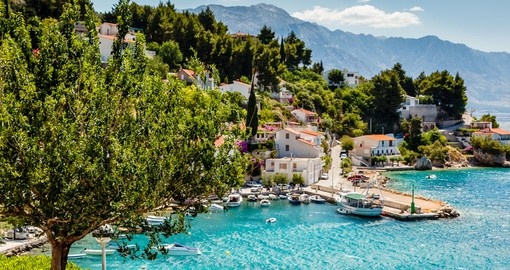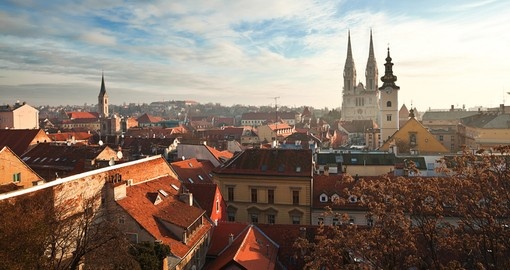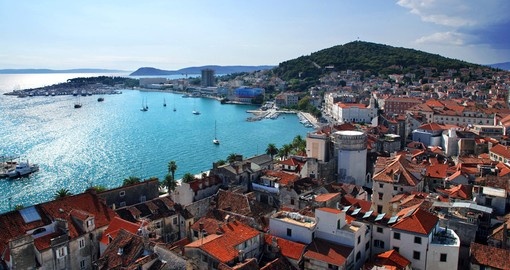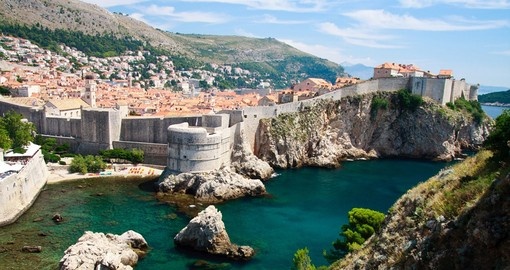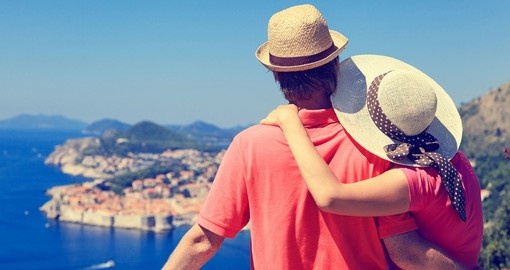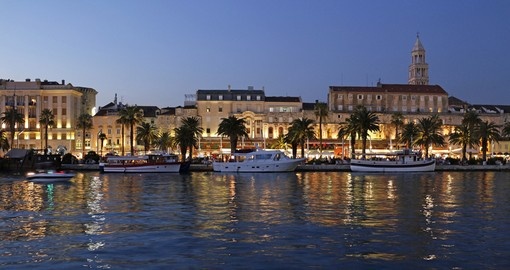Croatia Travel Information
Croatia is located on the east side of the Adriatic Sea to the east of Italy and borders Slovenia to the northwest, Hungary to the north, Bosnia and Herzegovina to the southeast, Serbia in the east and Montenegro to the south. It was at one time, part of Yugoslavia. The principal area of the tourist industry is concentrated along the Adriatic Sea coast. Croatia is perhaps underrated as a major tourist centre even though it is ranked the 18th most popular tourist destination in the world.
The country is geographically varied with flat agricultural plains along the Hungarian border and low mountains and highlands near the Adriatic coastline and islands. There are many islands which dot the Adriatic coastline. The largest ones are Krk and Cres.
Croatia is a land with a rich cultural heritage which can be discovered in the numerous museums, galleries and churches. It is also in evidence when walking through narrow white stone streets and alleys, the green slopes of Central Croatia or its fairy-like fortresses and castles.
Because of its geographical location, Croatia represents a blend of four different cultural spheres. It has been influenced by both western and eastern cultures. There are, in total, seven UNESCO world heritage sites.
Croatian traditional cuisine varies from one region to another. Dalmatia and Istria draw upon Italian and other Mediterranean cuisines which feature various seafood, cooked vegetables and pasta dishes as well as condiments such as olive oil and garlic. The continental cuisine is heavily influenced by Hungarian, Austrian and Turkish cuisine which includes meats, freshwater fish and vegetable dishes. There are three distinct wine-producing regions in Croatia. The continental region in the northeast of the country, especially Slavonia is capable of producing premium wines, particularly whites. Along the north coast, Istrian and Krk wines are similar to those produced in neighbouring Italy, while further south, in Dalmatia, Mediterranean-style red wines are the norm.
Zagreb, the capital, is a vibrant city. It has a charming medieval' old city with architecture and cobbled streets reminiscent of Vienna, Budapest, Prague and other Central-European capitals.
Dubrovnik, probably the best-known tourist centre in Croatia, is a stunningly intact walled city on the Adriatic Sea coast in the extreme south of the country, listed as a UNESCO World Heritage Site and is nicknamed "Pearl of the Adriatic". Today it is one of the most beautiful towns in the Mediterranean. Royalty, presidents and diplomats have all favoured the city. Dubrovnik is steeped in stunning architecture and sculptural detail and boasts spectacular churches, monasteries and museums.
Split is a city in Central Dalmatia and is the economic hub of the eastern Adriatic shoreline. One can still see the Roman walls, squares, and temples which remain. Because of its ideal climate, it has been nicknamed “The Mediterranean Flower".
Istria is the largest peninsula in the Adriatic Sea and is located at the head of the Adriatic between the Gulf of Trieste and the Bay of Kvarner. It is shared by three countries: Croatia, Slovenia, and Italy. The Italian influence here is fairly significant. The major resort is Porec with good beaches. Inland is Pula with its interesting Roman amphitheatre.
The Kvarner Gulf is a bay in the northern Adriatic Sea located between the Istrian Peninsula and the northern mainland. It includes the seaport city of Rijeka and the resort of Opatija, a popular summer and winter resort surrounded by beautiful woods. The whole seacoast to the north and south of Opatija is rocky and picturesque and contains several smaller winter resorts.
Croatia Travel Information
At Goway we believe that a well-informed traveller is a safer traveller. With this in mind, we have compiled an easy-to-navigate travel information section dedicated to Croatia.
Learn about the history and culture of Croatia, the must-try food and drink, and what to pack in your suitcase. Read about Croatia's nature and wildlife, weather and geography, along with 'Country Quickfacts' compiled by our travel experts. Our globetrotting tips, as well as our visa and health information, will help ensure you're properly prepared for a safe and enjoyable trip. The only way you could possibly learn more is by embarking on your journey and discovering Croatia for yourself. Start exploring… book one of our Croatia tours today!
Get a Trip Quote Order a Brochure







